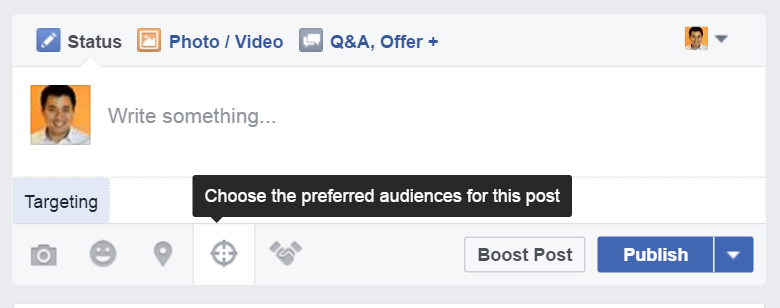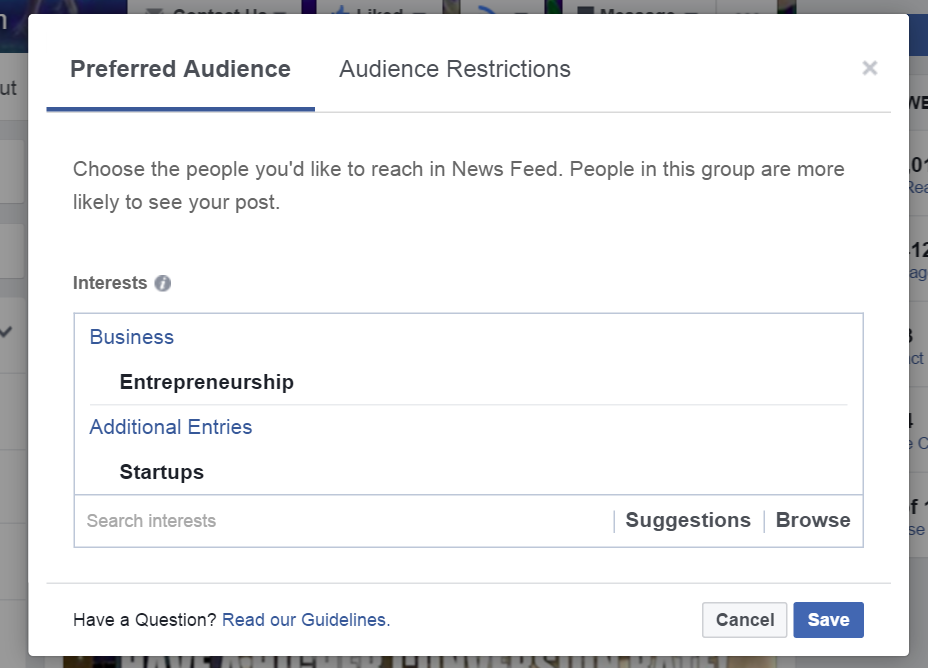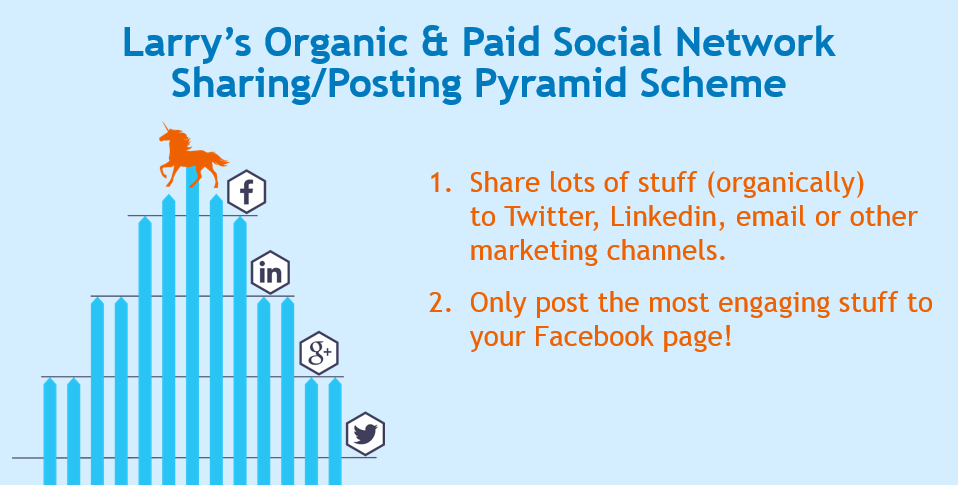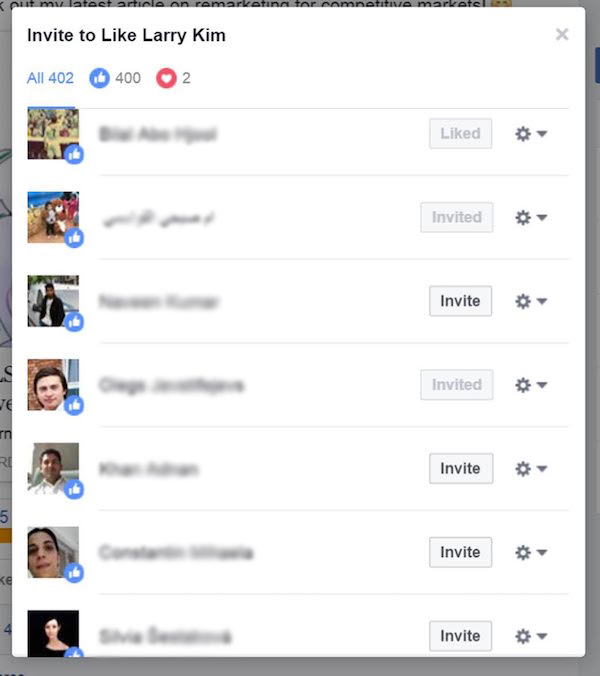Five ways to improve your organic reach on Facebook
Organic reach on Facebook is abysmal and getting worse, thanks to the latest announcement from the social network that's visited by more than a billion users every day.
Organic reach on Facebook is abysmal and getting worse, thanks to the latest announcement from the social network that's visited by more than a billion users every day.
Organic reach on Facebook is abysmal and getting worse, thanks to the latest announcement from the social network that’s visited by more than a billion users every day.
Facebook will show more funny videos and baby pictures posted by family and friends instead of news and other marketing content from brands, businesses, and publishers.
How bad is organic engagement on Facebook? On average, engagement is somewhere in the neighborhood of less than 1%. Every once in a while, one of your posts might still get tons of organic engagement. But it’s fast becoming mission impossible.
So what’s the solution?
Your mission, if you choose to accept it, is to mitigate the loss from the latest Facebook newsfeed algorithm. You must raise your organic engagement rates.
Let’s meet your new weapons – the five crazy hacks that will help you do what’s said to be impossible: hack the Facebook newsfeed algorithm.
Note: Some of these hacks involve spending a little bit of money. Others are totally free. All of them are totally worth your time.
Listen up: Preferred audience targeting is a brand new Facebook feature that works just like ad targeting, but for your organic posts. That’s right, this new feature lets you target your organic updates as if they were ads, for free.
Facebook lets you target your update so only the people who are most likely to be interested in your update will see it.
Here’s where the preferred audience targeting option can be found:

This feature is so powerful because not everyone who follows your Facebook page is going to care about every single update you publish. If you want to start raising your organic engagement, you need to stop broadcasting to all of your followers and focus on those people who are most likely to engage with specific updates.
Facebook’s preferred audiences feature is pure genius for companies that have a variety of products and divisions, or that operate in multiple countries. You can narrow the targeting based on users‘ interests and locations to reach the people you really want without bothering the rest of your followers.
This feature also has benefits for smaller companies and publishers. Take me for example… Preferred audience targeting allows me to decide who sees my posts – or who won’t see my post, using audience restrictions:

Here’s another example. Let’s say you’re a French clothing retailer with locations in France, Poland, and Germany. You could make it so that only French-speaking millennial females who live near your locations will see your post announcing your latest deals.
Remember: everybody who likes your page isn’t your target market. Plenty of random people will like your page over time, but then never engage with your updates, visit your website, or buy from you.
If you can only reach 1% of your audience, you should more narrowly target the people who are truly interested in what you have to offer.
The Unicorn Detector Pyramid Scheme is the process you can use to separate your content unicorns from the donkeys.
What is a content unicorn? Well, content becomes a unicorn when it is clearly among the top 1 to 2% of all of your content. These are your most rare and beautiful pieces of content that attract the most shares, engagement, and views.
A content donkey, on the other hand, doesn’t stand out at all. At most, it’s average. 98% of your content will be donkeys that get average engagement – again, less than 1% is the average organic engagement on Facebook, which is insanely low, right?
To raise your organic engagement rates on Facebook, you need to post fewer, but better updates. You can test out your content organically on Twitter. Here’s how it works.

Post lots of stuff on Twitter – somewhere around 20 tweets per day. But imagine that every tweet has been infected with a virus, one that will ultimately kill them without the antidote within less than 24 hours.
The only cure for these infected tweets? They need to get a significant number of retweets, clicks, likes, and replies.
Examine your top tweets in Twitter Analytics. Those tweets with the most engagement – your top 5 or 10% – have survived!
Your content that got the most engagement on Twitter is also highly likely to generate similar engagement on Facebook.
You can use Facebook’s Post Engagement Ads to give your posts a bit of a push. Yes, that means you’re spending a little money to “earn” some free reach in the news feed.

For example, let’s say I posted the above update only on my wall. The engagement is going to be pretty low. Maybe a few hundred people will see it.
So what happens if I spend just $20 to promote it? In this case, I paid for more than 4,400 impressions (clicks, follows, likes, etc.), but also got more than 1,000 organic engagements for free as a result.
How? Whenever someone shares your promoted post, it results in more people seeing it organically in their newsfeeds and engaging with it.
Did you know there’s a way you can selectively invite people who have recently engaged with one of your Facebook posts to like your page? This is a valuable but little-known feature available to some (but not all) pages.
You want people who engage with you to become part of your Facebook fan base. You know these people like you and are more likely to engage with your content because they’ve done so in the past.

Here’s how you do it: Click on the names of the people who reacted to your post (liked, loved, etc.). You’ll see three types of buttons (Invite, Liked, Invited). Clicking on that Invite button will send an invitation to people who engaged with one of your Facebook posts to like your business page.
Does it work? Yep. Between 15 to 20% of the people I invite to like my page are doing so.
The decline of organic reach almost mirrors the rise of video on Facebook.
Users watch more than 8 billion videos every day on the social network. And these videos are generating lots of engagement.
Just look at this recent research from BuzzSumo, which examined the average total number of shares of Facebook videos:

Facebook is doing its best to try to kill YouTube as the top platform for video. If you haven’t yet, now is the time to jump on the bandwagon.
Stop sharing vanilla posts that get little to no engagement. Add some video into your marketing mix! That should help improve your organic engagement because engagement begets engagement.
Facebook organic reach is pretty terrible. That’s why you should start treating your organic Facebook posts more like a paid channel, where you have to pickier and optimize to maximize engagement, in the hopes of getting more earned organic engagement.